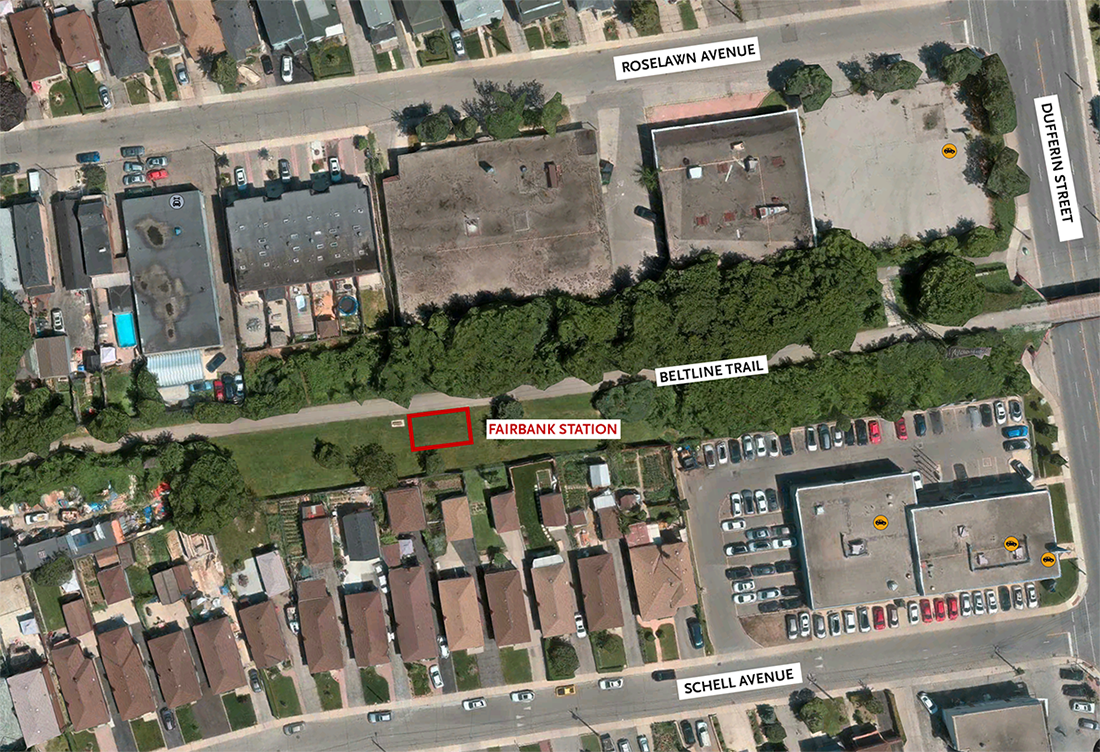
In the early 1890s, the Belt Line Railway connected new suburbs to downtown in a circular route around the city. Today, it is known as the Beltline Trail, a popular 4.5-kilometre tree-lined corridor enjoyed by all. Two new interpretive installations are being added along the trail to commemorate the Belt Line Railway as a part of Toronto’s Heritage.
The Fairbank commemorative station will be located west of Dufferin Street, and the Forest Hill Lost Station will be located at Bathurst Street. The design for each installation will be determined with the help of community feedback.
The timeline is subject to change.
The timeline is subject to change.
From August 28 to September 17, 2024, an online survey collected community feedback from at least 244 community members on two design options for the Forest Hill Lost Station.
Overall, 45 per cent of respondents preferred Design Option B and 41 per cent preferred Design Option A.
In response to Design Option A:
In response to Design Option B:
In total, 38 per cent of respondents provided comments or suggestions, some of which were beyond the scope of this project. This feedback included:
Construction of the Fairbank Lost Station will continue as planned, while the Fairbank Junction Station will be deferred indefinitely due to the ongoing construction of the Metrolinx Caledonia Station. As a result of the Fairbank Junction Lost Station deferral, the Forest Hill Lost Station will be added where the Beltline meets Bathurst Street.
From September 25 to October 15, 2023, an online survey collected feedback from at least 395 community members on two design options for the Fairbank Lost Station.
Overall, 53 per cent of respondents preferred Design Option B and 35 per cent preferred Design Option A.
In response to Design Option A:
In response to Design Option B:
In total, 36 per cent of respondents provided comments or suggestions, some of which were beyond the scope of this project. This feedback included:
Three installations commemorating the former train stations of the Belt Line Railway were installed in 2021: Yonge Station, Upper Canada Station and Eglinton Station. The design for Fairbank Junction and Fairbank commemorative station will have a similar appearance to the existing installations, with a material palette reminiscent of the historical stations.
While we aim to provide fully accessible content, there is no text alternative available for some of the content on this site. If you require alternate formats or need assistance understanding our maps, drawings, or any other content, please contact Max Grandmaison at 416-338-2359.


In 1892, the Grand Trunk Railway completed construction of the Belt Line, a railway built to connect new suburbs with the downtown in a circular route around the city. While popular in the first few months of operation, the railway service ended in November 1894 and the line from Mt. Pleasant Cemetery to Rosedale was abandoned.
Decades after the Belt Line ended operations, the areas through which the railway once travelled became some of the most desirable neighbourhoods. These new neighbourhoods needed building supplies and fuel, which travelled by rail, so in 1910, the Grand Trunk Railway rebuilt the northern section of the Yonge Street Loop to transport these commodities.
When the W.R. Allen Road opened in the 1970s, the rail service ended east of Marlee Avenue. Kay Gardner and local activists saved the Belt Line from being sold to private owners. The Canadian National Railway Company sold the Belt Line to the City for the purpose of converting it into a recreational trail and linear park.
Today, the 4.5-kilometre corridor is a beautiful tree-lined trail connecting neighbourhoods, parks and open spaces. While none of the Belt Line train stations remain, three of the former locations, referred to as “lost stations”, are now commemorative stations: Eglinton Station, Upper Canada College Station and Yonge Street Station.